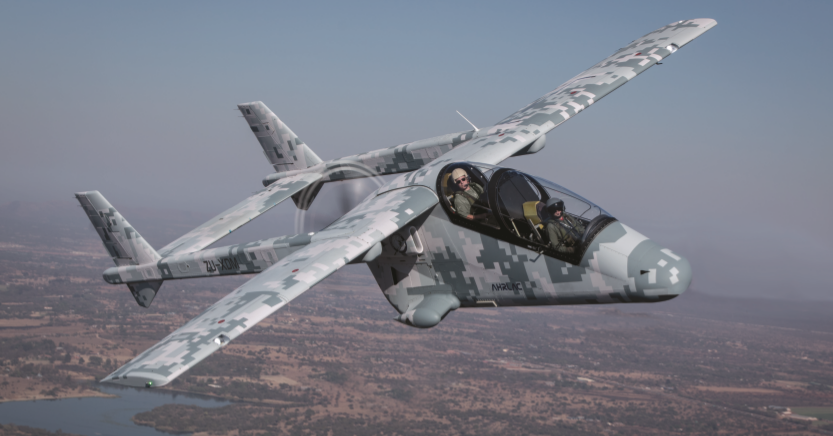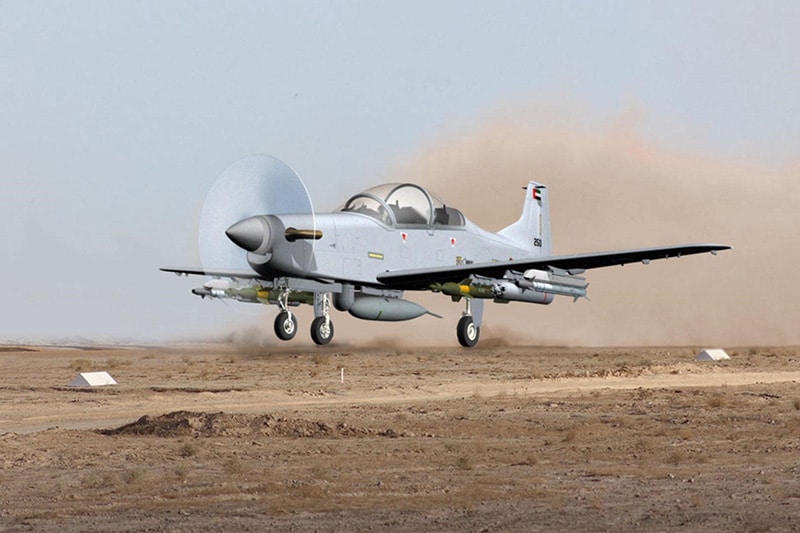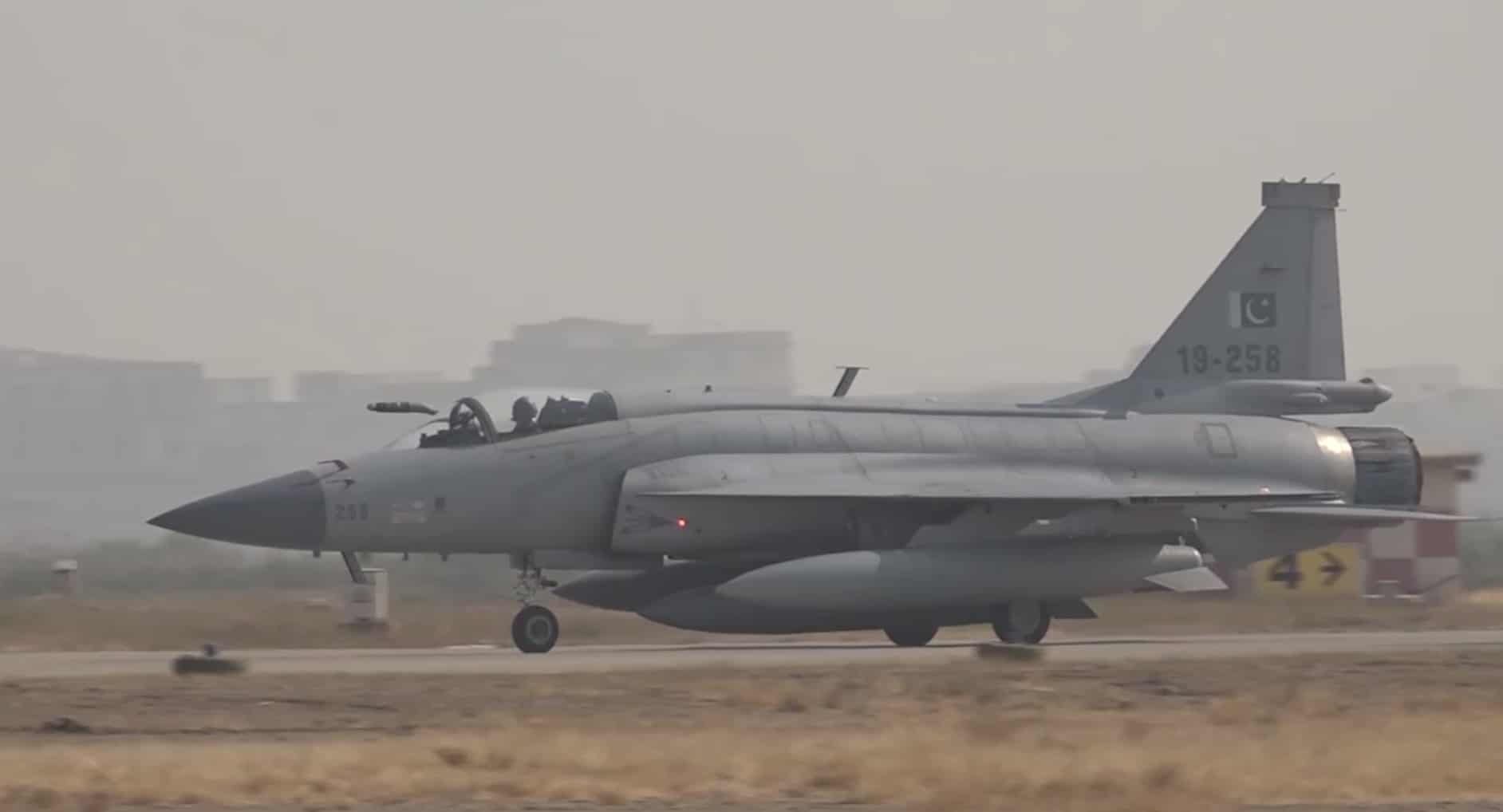3223Views 17Comments

Keep An Eye out for South Africa’s AHRLAC
19 November 2015
By Bilal Khan
As with the C-235 and C-295 piece earlier, you will occasionally find me come across and discuss a very interesting – but little known or appreciated – weapon system. For this article I am going to take a look at the Advanced High Performance Reconnaissance Light Aircraft (AHRLAC) developed and produced by the South African-based defence conglomerate Paramount Group and aviation firm Aerosud.
In the world of studying military technology our eyes are often drawn towards big-ticket items such as the Lockheed Martin F-35, but today’s wars are fought on many different fronts, some of them not actually requiring fighter aircraft that cost $100 million a unit to buy and $30,000/hour to fly. Rather, these fronts, such as counterinsurgencies, require militaries to be agile and efficient. But make no mistake, the capacity to keep an insurgency under control does not necessarily mean that the state is comparatively powerful, rather, it means that it has the right synergy of people, equipment and doctrine at its disposal to reverse and contain an insurgency.
The costs associated with developing that synergy are being driven down thanks in great part to systems such as the AHRLAC (and its competitors, e.g. the Super Tucano). The basic idea behind the AHRLAC is to offer military and law-enforcement entities access to incredibly affordable but relatively effective close air support (CAS) systems. To understand the value at hand, consider the cost (at least $20,000/hour) of flying a modern fighter aircraft such as the F-16 in order to deliver precision-guided bombs (PGB), especially in a CAS scenario of supporting soldiers during a battle. At some point, it simply becomes expensive and – to be frank – ineffective. An F-16 would need to be deployed from a forward operating base (FOB) and would need some time before it could reach a target; loitering in the skies in anticipation of movement would mount to the already high costs of having the plane in the air and add to pilot fatigue.
The AHRLAC on the other hand can bring over 800kg in PGBs as well as other munitions, such as laser-guided air-to-ground (A2G) missiles and 70mm rockets, at a fraction of the cost. One could potentially acquire AHRLAC units at less than $10 million a piece, and one can operate them to the tune of hundreds of dollars per hour. Not only that, but the AHRLAC – thanks to its short take-off and landing (STOL) capability – was designed to be to operate from areas with unprepared airfields and limited infrastructure (incapable of handling fighter aircraft). Granted a fighter such as the F-16 can bring several times the payload of the AHRLAC, but one will not be able to fly an F-16 as frequently over the COIN theatre as an AHRLAC, not without burning through a lot more money and tiring an expensive airframe anyways.
As for munitions, the AHRLAC was designed to carry modern precision-guided munitions. Granted, it cannot carry not heavy long-range stand-off weapons, but for the mission profile the AHRLAC is geared towards, its munitions inventory is solid. For example, the end-user can load the AHRLAC with multiple Mk-81 and Mk-82 bombs, which weigh in at (approximately) 125kg and 250kg, respectively. These bombs can be adapted into satellite and/or laser-guided munitions (i.e. precision-strike). The aircraft can also be equipped with laser-guided air-to-ground (A2G) missiles such as the 50kg Mokopa anti-tank missile (South Africa’s equivalent to the American AGM-114 Hellfire II).
It should be apparent that the aforementioned are genuinely lethal munitions, but to top off the AHRLAC’s usefulness, the aircraft is also capable of carrying mission specific pods in a specially designed conformal bay. In other words, it need not solely depend on external assets such as ground forces or a separate targeting aircraft to identify targets for engagement (though it can certainly operate in such a networked environment provided the user has the means). From what the AHRLAC commercial brochure states it seems that the aircraft is capable of being equipped with a whole host of equipment in the form of forward-looking infrared (FLIR) pods, synthetic aperture radar (SAR), etc, enabling it to perform intelligence, surveillance and reconnaissance (ISR) operations as well.
Granted one would not use systems such as the AHRLAC against opposing military forces, but against opponents with inadequate or non-existent anti-air warfare (AAW) capabilities, the AHRLAC is not to be taken lightly. When combined with the availability of armed drones, aerial gunships and/or dedicated attack helicopters, the AHRLAC can be another piece behind a state’s capacity to induce aerial suppression over an area with relatively limited impact to its wallet.
Herein lies another key point. Acquiring a sufficient number of AHRLAC is well within the means of many states, even the ones not known or capable of fielding fighter aircraft such as the F-16. The ability to effectively fight an insurgency (not to be confused with resolving it!) lies within a state’s capacity to synergize its human and material assets into a competently-set doctrine (i.e. not finding itself in a situation where it is using a $100 million jet to fly $30,000/hour sorties to fire $250,000 munitions at repurposed Toyota Hilux pick-up trucks or long abandoned warehouses). The AHRLAC is that kind of material asset.



17 Comments
by jigsaww
How does it differ from deploying a couple of UCAVs which are even cheaper to buy and operate, at the same time also not risking 2 pilots lives? It looks frankly like they put a pilot into a UCAV…
Its true, F-16s are an over kill…but with Pakistan now deploying UCAVs, is there any space for such a platform?
by saqrkh
I’d say payload.
These small and light aircraft can still carry upwards of 1000kg in explosive punch, an armed UAV like Burraq doesn’t possess that capacity. Also, one can buy these AHRLAC for very little compared to a comparably sized and capable UAV.
Armed UAV are typically used for targeted strikes against specific persons, the AHRLAC can offer sustained and frequent CAS for one’s ground forces in a battlezone.
by jigsaww
do you propose pakistan buying these platforms? and where do you propose pakistan deploying them?
pilot life is a big risk here…how secure are these against basic air defence systems such as manpads…?
what do you say?
by saqrkh
Not these specifically. If a light CAS system is needed then it would be better to wait on the TAI Hurkus. The PAF can utilize that platform to replace the T-37s when the time comes as well as CAS (with the same capabilities found on the AHRLAC). That said, the PAF wouldn’t use such a system (AHRLAC or Hurkus-C) in a state on stage engagement, but in low aerial threat engagements where sustained and frequent CAS as well as quick response air strikes are necessary. But a low (ideally non-existent) AAW threshold is a must for this to be fully effective.
An alternative idea is to buy a bunch of these AHRLAC for the paramilitary for use as patrol and ISR assets. I can definitely see the Frontier Corps and Rangers benefitting from this as they are given more ownership of managing the internal security affairs of the country.
by jigsaww
i also thought that it could be of better use for paramilitary forces. i wouldn’t want highly skilled pilots to be manning these…
by saqrkh
The AHRLAC can fly at heights of up to 31,000 feet, so for dropping LGBs or PGBs one definitely has some effective leeway to effect damage without significant self-risk provided the enemy’s AAW is weak or non-existent. That’s the case for most organic insurgencies today; you’d be fighting a serious state backed force if you’re encountering MANPADS, which is something I don’t think the Pakistani forces have dealt with in FATA or Baluchistan.
But to be honest I don’t think the AHRLAC should be one’s main light CAS tool in COIN. That role would be better served by the Super Tucano or TAI Hurkus-C, i.e. faster aircraft that can potentially maneuver much better (close to low-speed jets without the same cost burdens). I realize the AHRLAC can be equipped with a RWR and active self-protection suite, but if you’re reaching that point then you may be better off with the Super Tucano.
That said, for LEA, anti-narco, patrol and ISR, the AHRLAC might be very compelling. The strike element would be a secondary consideration.
by Guest
Can Pakistan some how develop the K8 into such a platform? With better
capabilities than the AHRLAC, as you’ve mentioned the Super Tucano or Hurkus is a better platform than AHRLAC, why not an Attack version of K8?
This would give Pakistan an indigenous system with probably
an export market.
by saqrkh
Pakistan could but bear in mind that the K-8 is still a jet, so it may end up being more expensive to operate than the AHRLAC, Hurkus or Super Tucano.
by Guest
hmm, why not a K8 LEAD trainer then? I mean why isn’t Pakistan moving in this direction? I’ve heard it doesn’t even wants to induct the twin seat JF17 which in my opinion would other wise be a better home made LEAD trainer instead of buying expensive foreign aircrafts.
What are your thoughts on this?
by saqrkh
It isn’t clear exactly what the PAF intends to do in terms of fighter conversion and advanced training. The K-8 was originally meant to replace the PAF’s T-37s, but the PAF has opted to persist with the T-37s, choosing to buy K-8s incrementally.
by Guest
Indeed, it isn’t clear what they are doing.
Sometimes, I feel their plans, strategies or inductions don’t really work out as they plan, which is why I suppose, for eg, you don’t see the K8 taking over T37s as it probably is not as good as it was thought to be?
The reason I think this is the case is also because of the JF17 program, initially there was so much talk about this platform to be a great aircraft for countries with weak economies or smaller airforce or the ones who are in need to replace their old Migs, Mirrages and F5s. It was marketed in such a way that, like many others I thought it would sell like hot cakes. Honestly I am disappointed. It hardly has one “secret” export order. From some sources I’ve come to know how desperately it is being marketed to a small country in the Middle East. The country keeps picking out faults in it. They probably don’t want to buy it, but might just end up buying it due to bilateral relations. I think this is the case with other “potential” buyers too. I think Pakistan also is not satisfied at all with the current Block II and is working hard to get it better in Block III, but is limited due to the airframe.
In short, in my opinion PAF has not got what it probably was looking for in these platforms.
I hope I am wrong!
by saqrkh
PAF shouldn’t worry about exports, it can’t afford to invest in the platform in a manner that suits the interests of prospective customers, but not its own. Had it been just PAF, then we wouldn’t probably have the twin seat issue, the simulators were working just fine.
Block-III will be a significant jump from Block-I/II, including airframe , which is expected to include a higher proportion of composite materials. The Block-I/II is a good fighter, nothing special but it is modern and gets the job done in terms of meeting the PAF’s core needs. The Block-III however – if AESA, HMD/S, etc pan out – would be a much more credible system.
by AfricanDefenceReview
Probably worth noting that the AHRLAC has yet to actually test any of its payloads, let alone against a target of any kind. At present the project is still testings its aerobatic qualities.
Attempting to figure out what it can and can’t be used for at this stage is mostly hypothetical.
by Guest
You are right, Pakistan should focus on its own needs first and I hope Block III comes out to be a better modern system with significant improvements.
But I believe getting export orders is a benchmark for Fighter aircrafts. Currently by not getting any export orders despite of all the hype there was about it to be such a great replacement of old Migs, Mirages and F5s, even after all the news that we hear about countries taking “keen” interest in it at airshows and when visiting Pakistan I am afraid it simply isn’t what its presented as at the moment, or may be its just uniquely suitable for Pakistan.
by saqrkh
We should consider that at the end of the day, the primary user of the JF-17 is the PAF, and if it works for the PAF, then there really is no other reason (except for commercial gain and prestige) to earn exports on it.
We also need to accept the reality that arms sales are more than just commercial transactions, but a currency of one’s own political and economic prestige. The countries that are still operating F-7s, F-5s, Mirages, etc, aren’t exactly capable of dishing out a large one time payment; Pakistan isn’t in the position of offering loans or installments. The vendors who have the most sway in these markets are the ones who can offer and enforce payment plans, sway policy, set standards, etc.
by Guest
Hmmm..Makes Sense.
by Matthys Jacobs
I wouldn’t say cheaper to operate.
Depending on the sort of UCAV whether medium or high altitude and also the capability to land or take off on austere airstrips or airfields.
Given that the above platform offers all of these capabilities for under $10 million and in theory could field far more munitions more relevant to modern day COIN (It’s not always possible to fire a SGM such as a Hellfire or Chinese equivalent) and requires something of the sort of a 20 mm or 30 mm response in order to drive combatants away etc.
Border Patrol also forms an integral part of the platform. The platform could in theory be a better platform for patrol because of it’s range of view. Unless a battalion of UAV’s had technology such as Gorgon’s Eye, there’s no way to share the picture without joint intelligence which is rare when operating UAV’s in various roles.
It fulfills a niche that current UAV’s cannot offer. It’s not a replacement to UCAV’s but offers a force multiplication effect.